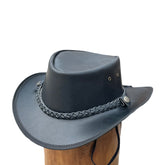How to Care for and Maintain Your Textile Vest
Table of Contents
- Introduction
- Cleaning Your Textile Vest
- Drying Your Textile Vest
- Reproofing and Waterproofing
- Storing Your Textile Vest
- Handling Tears and Repairs
- Conclusion
Textile vests are a popular choice for bikers and outdoor enthusiasts due to their versatility, comfort, and durability. However, to ensure your textile vest remains in top condition and serves you well for years to come, proper care and maintenance are essential. In this blog, we'll provide a comprehensive guide on how to care for and maintain your textile vest, keeping it looking great and performing optimally.
Why Proper Care and Maintenance are Important
Caring for your textile vest not only prolongs its lifespan but also ensures that it continues to provide the protection and comfort you need. Regular maintenance can prevent wear and tear, keep the fabric in good condition, and maintain its waterproof and breathable properties.
Cleaning Your Textile Vest
Regular cleaning is crucial to maintain the appearance and functionality of your textile vest. Here's how to do it properly:
1. Check the Care Label
Before you start cleaning your vest, always check the care label for specific instructions from the manufacturer. This will provide important information on the best cleaning practices and any restrictions.
2. Spot Cleaning
For minor stains and spots, you can clean the affected area with a mild detergent and a soft cloth or sponge. Gently dab the stain, avoiding excessive scrubbing that could damage the fabric.
3. Machine Washing
If your vest is machine washable, follow these steps:
- Use a Gentle Cycle: Set your washing machine to a gentle or delicate cycle with cold water.
- Mild Detergent: Use a mild detergent designed for technical fabrics. Avoid bleach and fabric softeners as they can damage the material.
- Close All Zippers and Velcro: Make sure all zippers and Velcro closures are secured to prevent snagging.
- Wash Separately: Wash your vest separately from other garments to avoid color bleeding and fabric damage.
4. Hand Washing
For vests that require hand washing:
- Fill a Basin: Fill a basin or sink with cold water and add a small amount of mild detergent.
- Gently Agitate: Submerge the vest and gently agitate the water with your hands to loosen dirt and grime.
- Rinse Thoroughly: Rinse the vest thoroughly with cold water to remove all soap residue.
Drying Your Textile Vest
Proper drying is essential to maintain the shape and functionality of your vest.
1. Air Dry
The best way to dry your textile vest is to air dry it. Lay it flat on a clean, dry towel or hang it on a clothesline in a shaded area. Avoid direct sunlight, as UV rays can degrade the fabric over time.
2. Avoid High Heat
Never use a tumble dryer or expose your vest to high heat, as this can damage the fabric and any waterproof coatings. If you need to speed up the drying process, use a fan or place the vest in a well-ventilated area.
Reproofing and Waterproofing
To maintain the waterproof properties of your textile vest, periodic reproofing is necessary.
1. Use a Reproofing Spray
Once your vest is clean and dry, apply a reproofing spray designed for technical fabrics. Follow the instructions on the product label for the best results. This will help restore the water-repellent finish and keep you dry in wet conditions.
2. Ironing
Some reproofing products may require low-heat ironing to activate the waterproof coating. Always check the care label and product instructions before using an iron. If ironing is safe, use a low-heat setting and place a cloth between the iron and the vest to protect the fabric.
Storing Your Textile Vest
Proper storage is crucial to prevent damage and maintain the shape of your vest.
1. Clean Before Storing
Always clean your vest before storing it for an extended period. Dirt and oils can degrade the fabric over time.
2. Use a Garment Bag
Store your vest in a breathable garment bag to protect it from dust and pests. Avoid plastic bags, as they can trap moisture and cause mildew.
3. Avoid High Temperatures and Humidity
Store your vest in a cool, dry place away from direct sunlight, high temperatures, and humidity. These conditions can damage the fabric and any waterproof coatings.
Handling Tears and Repairs
Regularly inspect your vest for any signs of wear and tear. Addressing small issues promptly can prevent them from becoming major problems.
1. Patching Small Tears
For small tears, use a fabric repair patch designed for technical fabrics. Clean the area around the tear, apply the patch according to the instructions, and allow it to set.
2. Professional Repairs
For larger damages or if you're unsure about repairing the vest yourself, seek professional repair services. Many outdoor and motorcycle gear retailers offer repair services for technical fabrics.
Conclusion
Proper care and maintenance of your textile vest from Falcon Suede USA will ensure it remains in excellent condition, providing you with the protection and comfort you need on your adventures. By following these tips, you can extend the life of your vest and keep it looking great for years to come.
Explore our Falcon Suede USA collection for high-quality textile vests and other premium outdoor gear. Keep your gear in top shape and enjoy your rides to the fullest!








